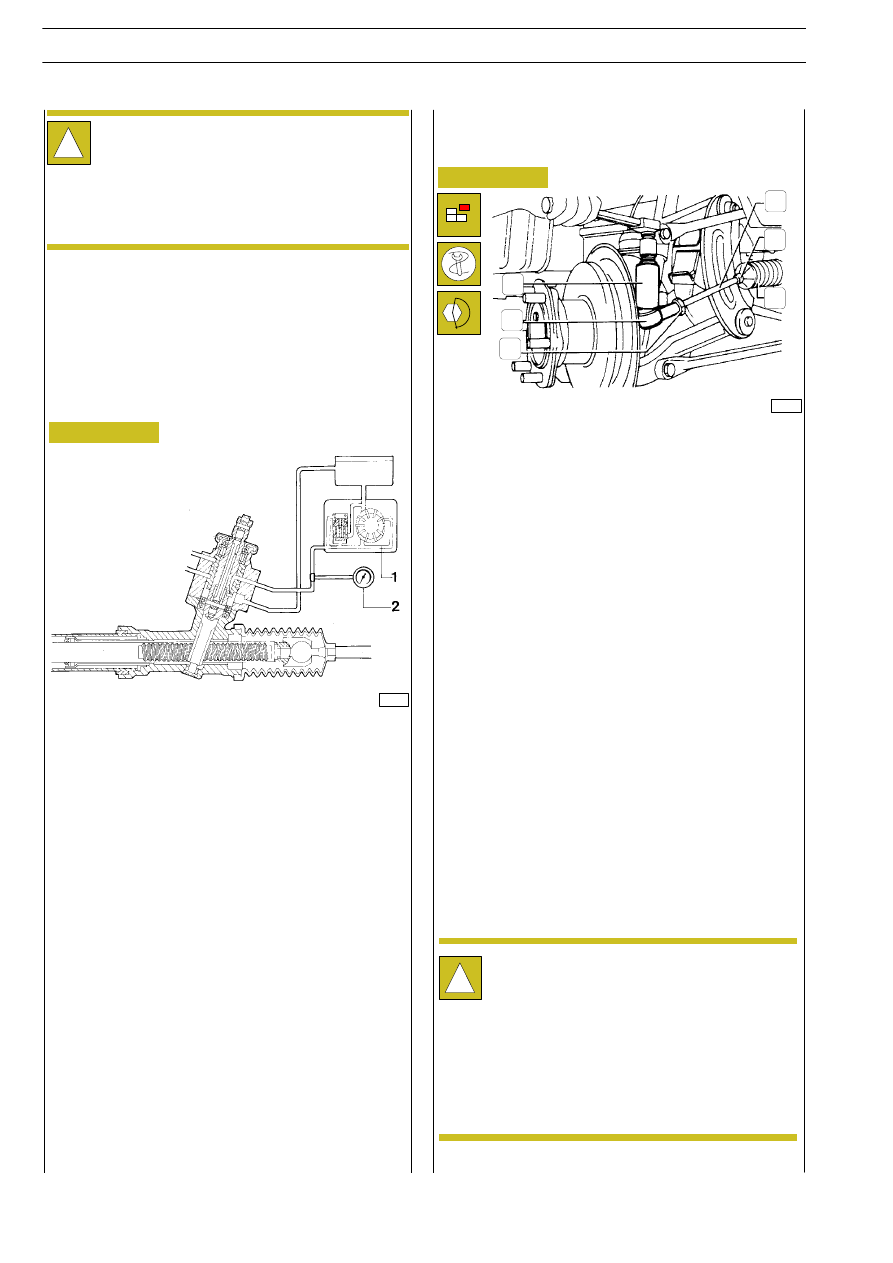Iveco Daily. Manual - part 310

Check that the protection casings of the knuckle heads are in
perfect condition and that their pivots do not present play,
otherwise replace them as described below.
Loosen the nut (3) securing the knuckle head (2) to the tie rod
(4).
Remove the nut fixing the knuckle head to the steering gear
lever and using the extractor (1) 99347074 remove the
knuckle head.
Unscrew knuckle head from the tie rod of the steering box
noting down the number of turns needed to disassemble.
Remove the fixing brackets (5) and extract the protection
casing (6).
In order to re-fit the assembly, perform the above operation
in reversed order, sticking to the following instructions:
- carefully clean the steering gear tie rod knuckle;
- lubricate the protective boot seats on the power steering
box to facilitate assembly;
- screw up the knuckle head with the same number of turns
used to disassemble it;
- fit a new o-ring on the power steering box;
- tighten the nuts of the prescribed torque;
- Adjust toe-in as shown in the respective section.
Lift the front of the vehicle and put the wheels in the straight
ride position.
Start the engine and fully speed up; if the steering gear put itself
in steering position, the hydraulic steering centre is wrong and
the hydraulic power steering must be changed.
Checking hydraulic steering centre (for ”ZF”
power steering only)
Join a pressure gauge (2) on the oil delivery piping on the
power steering pump (1). Rotate the steering wheel up to the
limit stop, speed up the engine and read on the pressure gauge
the maximum pressure value, which mast be of 80 bar.
Check the oil level in the tank, if necessary top up.
Lift the front part of the vehicle, start the engine and make it
idle for a certain period.
Check that there is no oil leakage from the hydraulic circuit and
check the tank level.
Slowly rotate the steering wheel in the two steering directions
so that the air contained in the hydraulic system goes out.
Check again the oil level in the tank and, in case top up.
501430
Bleeding the air from the hydraulic
system
The only possible interventions on the power steering
and mechanical steering systems are: replacement of
ball joints, replacement of protective rubber boots,
linkages and rubber bushings. Follow the instructions
provided in the specific paragraphs.
Replace the power steering system if problems
referred to this system only are found.
19598
32875
Figure 11
Figure 12
CHECKS AND OPERATIONS ON THE
VEHICLE
Checking maximum pressure
!
520636
SWIVEL HEADS
501438
PROTECTION CASINGS
501410
STEERING GEAR CONTROL
Vehicles equipped with an Air-Bag
!
Before doing any work on steering gear control
components:
- steering wheel;
- steering control lever system;
- steering gear shaft
Strictly observe the safety standards described in the following
paragraphs for Air-Bag system components.
1
2
3
4
5
6
16
STEERING GEAR
D
AILY
Base - May 2004